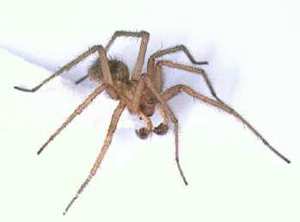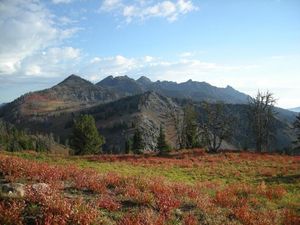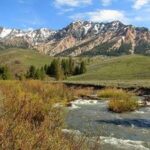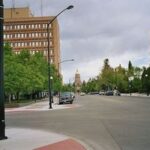The hobo spider was originally from western Europe and was introduced to the northwestern United States sometime before the 1930’s. By 1960, the spider had spread as far east as Spokane, Washington, Moscow, Idaho and Oregon. In addition, by 1988, cases of the hobo spider bites have appeared in western Canada, central Montana, and Utah as well. By 1996, it was confirmed that the hobo spiders also exist in western Wyoming.
It is believed by some scientists that the spiders live for one to three years before dying. The eggs of the hobos are deposited in one to four egg cases in late September and October. The eggs are usually attached to the undersides of rocks, wood, or various items found in yards, gardens and vacant lots. Each egg case contains one hundred or more eggs. The eggs hatch in early to mid-June. Once hatched, the spiderlings emerge, feed and mostly remain beneath the surface during their first season. During wintertime, they can be found indoor. Once the spiders become adults, the female build webs and remain stationary while the males begin their wanderings in search of mates and often enter houses through garage and crawl spaces. Most bites occur during the summer before the mating that occurs in first week of September. After mating, the males begin to die, and the females construct the egg cases and most remain in the web until they die during November. Sometimes, adult females do enter houses from late September to November.
An adult hobo spider is a large (12-18 mm length) brown spider, with long legs. The male sports two pedipalpi (antennae-like protuberances) between the two front legs, which are swollen at the ends. These pedipalpi are actually the male genitalia. The female usually has a larger abdomen than the male, and does not have swollen pedipalpi.
Hobo spiders are not good climbers and will usually be found at ground or basement level. The best way to ensure that hobo spiders do not crawl into your bed is to keep the blankets off the floor as they will not be able to crawl up the bedposts as it’s usually too smooth.
For a long time, hobo spider bites were assumed to be “brown recluse spider bites” instead and the mistake is still being made to this very day. It is said that hobo spiders normally will not bite without clear provocation. About 50 percent of defensive bites by the hobo are “dry” and no venom is injected. They are more likely to inject venom in a food that they plan to consume. Very often, a defensive bite is painless so many people who have been bitten did not notice when it happened. It was discovered that the male hobo produces more severe effects than the female. When bitten and injected with venom, redness forms around the bite site, many people mistake it for a mosquito bite. Within 24 to 48 hours, blistering may occur and within another 24 hours, the blisters may rupture, leaving an open wound. Within a few days, if left uncovered, a scab formation begins to develop over the lesion, and by three weeks it becomes pronounced. Generally after 45 days, the lesion will heal and leave a scar. Although, there are cases when a bite is delivered in an area of fatty tissue and the lesions become deep and extensive and will not heal for two to three years!
Other long-term physical effects are intractable burning pain, and damage to blood vessel valves, and cyst formation occasionally occurs when a bite is delivered in an area of fatty tissue. The lesion that results is sometimes multiple resulting, not from more than one bite but rather from gravitational drift, which moves venom downward, away from the bite site. This process involves circulatory disturbances which result into a lack of adequate blood flow in the affected tissues. This procures an area which does not receive enough blood, and the area literally dies as a result of oxygen starvation. It is important to go to your doctor if you have experienced a bite in an area of fatty tissue, and to keep a very close eye on the bite.
The most common symptom is a severe headache, which usually does not respond to aspirin (which can prolong bleeding time). In addition, one may experience dry mouth, nausea, weakness, lethargy, dizziness, visual disturbances, hallucinations, joint pain among other effects. Most people who get bitten do not experience all these symptoms but it depends on the severity of the poisoning. About 15 percent of bites are severe enough to require hospitalization. In rare cases, bites can result into a fatal outcome.
In addition, if you think you were bitten and have the spider within your sight, do your best to catch the spider. It does not matter if it is deaf or alive, bring it to the clinic with you. It will help the doctor or physician correctly diagnose your bite.
Reference:
- hobo spiders: www.hobospider.com/info/





